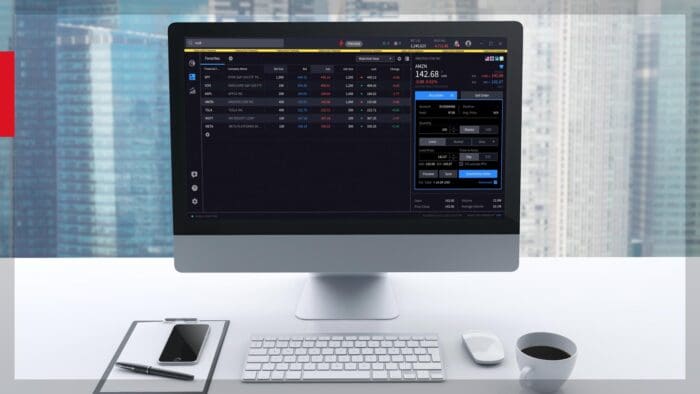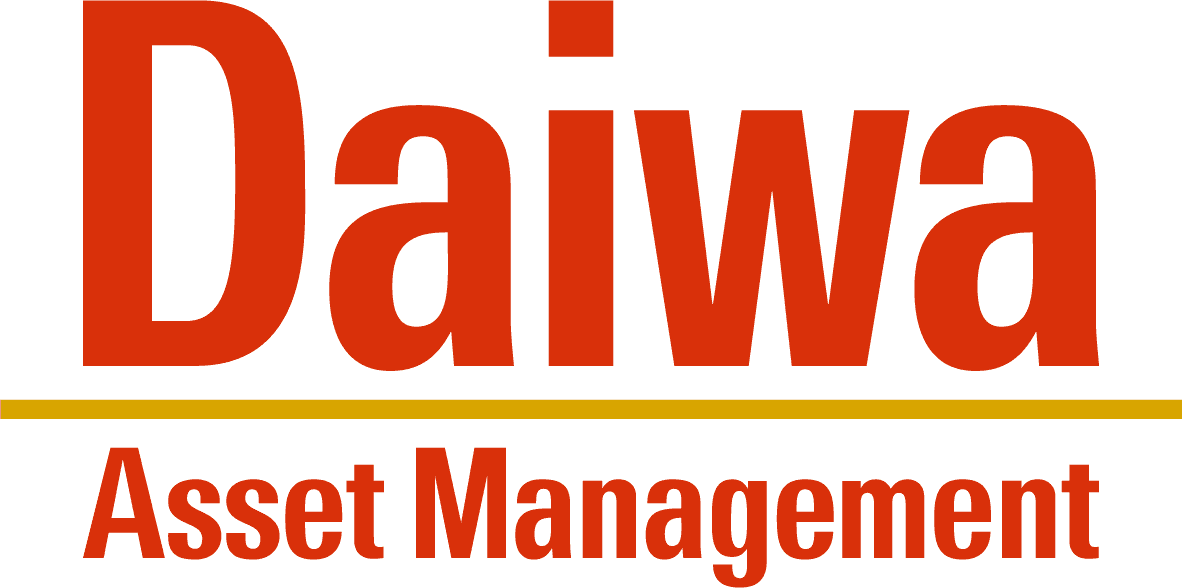Key takeaways
US stocks
The S&P 500 Index closed last week at an all-time high, bouncing back from a 20% decline earlier this year.1
Market expectations
Markets appear to be pricing in clarity on US trade policy, and modest support from Congress and the Federal Reserve (Fed).
German spending
The fiscal backdrop in Germany is significantly underappreciated by many market participants, in our view.
We’re at the midpoint of 2025, and markets commemorated the occasion with a new high for the S&P 500 Index last week. Given that the market endured a 20% decline from its February 19 peak to the morning of April 91 (just before the US administration announced a 90-day pause on its Liberation Day tariffs), it’s unlikely that many investors expected US stocks to be back at record levels by midyear. And yet, here we are. So, what do we make of this new high?
Five trends to watch
1. Markets lead the economy
The 20% decline in the S&P 500 Index from mid-February to early April signaled the current slowdown in US economic growth2 and anticipated price pressures. Markets tend to move ahead of economic data, not the other way around.
2. Looking ahead to improved policy clarity
Markets now appear to be pricing in greater clarity on trade policy from the Trump administration, along with modest support from Congress and the Fed. Our base case assumes that tariffs will trigger a one-time price adjustment rather than sustained, broad-based inflation.
3. Geopolitical tensions and market resilience
While the durability of the ceasefire between Israel and Iran remains uncertain, history suggests that regional conflicts rarely derail global market cycles. We don’t expect tensions to significantly disrupt global economic activity.
4. Artificial intelligence (AI) narrative isn’t dead
NVIDIA lost about $600 billion of value on January 27 when a Chinese firm announced that its DeepSeek models could produce similar AI outcomes as US firms.3 Some market participants questioned whether the hyperscalers would start to cut back on their spending. There has been no evidence of that happening. Last week, comments from NVIDIA CEO Jensen Huang indicated that he sees a continued rapid acceleration in spending. His comments took NVIDIA’s stock price to a new all-time high.4
5. Perils of market timing
The recent $41 billion in outflows from global equity mutual funds and ETFs between March and mid-June underscores the difficulty of timing the market.5 Volatility and extreme sentiment often create buying opportunities. Reacting emotionally to short-term headlines — whether with panic or exuberance — is rarely productive. We believe a better approach is for investors to stay focused on their long-term plans.
US economy shows signs of moderation
A slew of indicators released last week suggested that a long-awaited slowdown in “hard” economic data may have finally begun to arrive.
- Real US gross domestic product (GDP) growth for the first quarter was revised down to -0.5% — the first contraction since the first quarter of 2022 — on the back of a larger slowdown in consumer spending than previously estimated.6
- Recent data also showed that personal income and spending declined in May,7 which suggests that the gradual slowdown seen in the first quarter may also extend into the second.
- New home sales in May experienced their largest monthly decline in three years,8 while continuing jobless claims for the week ending June 14 rose to the highest level since November 2021.9
On the inflation front, last week saw the core Personal Consumption Expenditures Price Index, which is the Fed’s preferred inflation gauge, tick up to 2.7% on a year-over-year basis in May. However, the headline measure, which includes more volatile food and energy prices, was lower at 2.3%.10 These figures were largely in line with expectations yet may begin to creep higher in the coming months as businesses potentially pass on the costs of higher tariffs.
Importantly, despite the growing weakness in parts of the economy, we’d caution against making big investment decisions based on a single quarter or month’s worth of economic data. The decline in first-quarter GDP was primarily due to a surge in imports in anticipation of tariffs.11 The recent drop in new home sales largely reflects an ongoing slowdown in the housing market, given elevated home prices and high mortgage rates.12 The rise in jobless claims is a sign of continued cooling in the US labor market, which has been happening since 2022.13 Taken together, recent data points to a resilient, albeit moderating, US economy.
Confidence in the US dollar continues to erode
While US stocks hit an all-time high last week, the US Dollar Index (DXY) hit a three-year low.14 It has been on a downtrend almost uninterrupted this year, and we have little reason to think that’ll stop. Tariff and immigration policy is dollar negative as these policies undermine the US growth story.
The US, under the Biden administration, and now the Trump administration, is sending a clear message that the dollar will be weaponized. Foreign investors, who are over-indexed to US assets, would therefore be expected to buy fewer US assets than they have in previous decades. This would continue to put downward pressure on the dollar.
News that Section 899 may be removed from President Trump’s “Big Beautiful Bill” will likely reduce fears of holding dollar assets. (The proposed new Section 899 of IRS code could increase the taxes imposed on individuals, businesses, governmental, and other entities based in countries deemed to impose unfair taxes on US individuals and businesses.) We think the damage has been done and investors are starting to slowly diversify away from the US.
The dollar has continued to weaken even as the Fed is expected to cut less than the market had priced in the first quarter.15 We continue to believe the Fed has a difficult job justifying cutting rates given the growth and inflation backdrop today. It’s made all the harder with their independence being questioned too. The data mentioned above does make us question when the Fed will start to cut again. For now, it remains very much in a wait-and-see mode.
German fiscal support is still underappreciated
We hear a lot of skepticism around whether the German announcements at the start of the year that defense and infrastructure spending will be increased will be followed through on and make a difference. Our view is that skepticism is misplaced, and the fiscal backdrop in Germany is significantly underappreciated by many market participants. It’s a core reason for the expectation that European stock markets could outperform US stock markets in the coming months and years, and that the euro could further strengthen.
Further evidence supporting our thesis came last Tuesday when the German government agreed on a draft budget for 2025. The plan included 200 billion euros of defense and infrastructure spending in 2025, which would mean raising debt to the tune of 3% of GDP. That’s a bold aim for the rest of this year but is likely to encourage more private investment in order to capture some of that spending.
At the NATO summit last week, members agreed to a new 5% of GDP defense spending target. If achieved, that would double defense spending by 2035. This is a long-term trend worth following.
We believe European stocks and the euro stand to benefit from Germany’s newfound desire to invest, as well as NATO’s increased defense spending. European stocks have beaten US stocks this year,16 especially in common currency terms, and we think that trend will continue.
Ceasefire means oil risk premium disappears
A sustained disruption to oil supplies and higher oil prices isn’t our base case. The ceasefire between Israel and Iran supports that base, and Brent crude oil has fallen below where it was before Israel struck Iran on June 13. In our view, this is a clear example of where ignoring the knee-jerk reaction to geopolitical events is the right course of action. Risks in the region are clearly not removed completely, and commodity markets remain sensitive to any re-escalation in tensions. However, absent an extreme scenario, we believe this is a low-probability event. Lower oil prices lend support for weakening inflation and, therefore, slightly reduce the headwinds to Central Banks’ rate cuts.
We’re open to changing our views as facts change. Dogma can be a killer of investment returns. But the facts as we interpret them suggest further weakness in the US dollar, the potential for international stocks to outperform US stocks, and a preference for short duration over long duration fixed income.
What to watch this week
| Date | Region | Economic release | Why it’s important |
|---|---|---|---|
| June 30 | China | NBS Manufacturing and Non-Manufacturing Purchasing Managers’ Indexes | Key indicators of economic activity in China’s industrial and service sectors. |
| June 30 | Eurozone | Consumer Price Index Flash Estimate | Preliminary inflation data; influences European Central Bank monetary policy. |
| July 1 | US | ISM Manufacturing Purchasing Managers’ Index | Measures manufacturing sector health, a leading economic indicator. |
| July 1 | Canada | Gross domestic product (GDP) | Monthly GDP data reflects economic growth trends. |
| July 1 | Australia | Reserve Bank of Australia interest rate decision | Central bank policy decision; affects currency and markets. |
| July 2 | US | Job Openings and Labor Turnover Survey (JOLTS) | Measures labor demand; important for employment outlook. |
| July 2 | US | Federal Open Market Committee (FOMC) meeting minutes | Provides insight into Fed’s monetary policy stance. |
| July 3 | Eurozone | Unemployment rate | Key labor market indicator; affects consumer confidence. |
| July 3 | US | Initial jobless claims | Weekly snapshot of labor market conditions. |
—
Originally Posted on June 30, 2025
Five trends to watch as US stocks hit a new high by Invesco US
Footnotes
- Source: Bloomberg L.P., June 27, 2025, based on the return of the S&P 500 Index.
- Source: US Bureau of Economic Analysis, March 31, 2025. Based on the US gross domestic product.
- Source: Bloomberg L.P., January 18, 2025.
- Source: Bloomberg L.P., June 27, 2025. The mention of individual companies does not constitute an investment recommendation.
- Source: Investment Company Institute, June 2025, based on mutual fund and ETF outflows from March until the middle of June.
- Source: US Bureau of Economic Analysis, June 26, 2025.
- Source: US Bureau of Economic Analysis, June 27, 2025.
- Source: US Census Bureau, June 25, 2025.
- Source: US Department of Labor, June 26, 2025.
- Source: US Bureau of Economic Analysis, June 27, 2025.
- Source: US Bureau of Economic Analysis, June 26, 2025.
- Source: US Census Bureau, June 25, 2025. Mortgage rates are sourced from bankrate.com.
- US Department of Labor, June 26, 2025.
- Source: Bloomberg L.P., June 27, 2025, based on the US Dollar Index, which measures the value of the US dollar versus a trade-weighted basket of currencies.
- Source: Bloomberg L.P., June 27, 2025, based on fed funds implied rates.
- Source: Bloomberg L.P., June 27, 2025, based on MSCI Europe Index vs. MSCI USA Index. The MSCI Europe Index captures large- and mid-cap representation across a universe of developed market countries in Europe. The MSCI USA Index measures the performance of the large- and mid-cap segments of the US market.
Disclosure: Invesco US
This does not constitute a recommendation of any investment strategy or product for a particular investor. Investors should consult a financial advisor/financial consultant before making any investment decisions. Invesco does not provide tax advice. The tax information contained herein is general and is not exhaustive by nature. Federal and state tax laws are complex and constantly changing. Investors should always consult their own legal or tax professional for information concerning their individual situation. The opinions expressed are those of the authors, are based on current market conditions and are subject to change without notice. These opinions may differ from those of other Invesco investment professionals.
NOT FDIC INSURED
MAY LOSE VALUE
NO BANK GUARANTEE
All data provided by Invesco unless otherwise noted.
Invesco Distributors, Inc. is the US distributor for Invesco Ltd.’s Retail Products and Collective Trust Funds. Institutional Separate Accounts and Separately Managed Accounts are offered by affiliated investment advisers, which provide investment advisory services and do not sell securities. These firms, like Invesco Distributors, Inc., are indirect, wholly owned subsidiaries of Invesco Ltd.
©2024 Invesco Ltd. All rights reserved.
Disclosure: Interactive Brokers Third Party
Information posted on IBKR Campus that is provided by third-parties does NOT constitute a recommendation that you should contract for the services of that third party. Third-party participants who contribute to IBKR Campus are independent of Interactive Brokers and Interactive Brokers does not make any representations or warranties concerning the services offered, their past or future performance, or the accuracy of the information provided by the third party. Past performance is no guarantee of future results.
This material is from Invesco US and is being posted with its permission. The views expressed in this material are solely those of the author and/or Invesco US and Interactive Brokers is not endorsing or recommending any investment or trading discussed in the material. This material is not and should not be construed as an offer to buy or sell any security. It should not be construed as research or investment advice or a recommendation to buy, sell or hold any security or commodity. This material does not and is not intended to take into account the particular financial conditions, investment objectives or requirements of individual customers. Before acting on this material, you should consider whether it is suitable for your particular circumstances and, as necessary, seek professional advice.




















Join The Conversation
For specific platform feedback and suggestions, please submit it directly to our team using these instructions.
If you have an account-specific question or concern, please reach out to Client Services.
We encourage you to look through our FAQs before posting. Your question may already be covered!